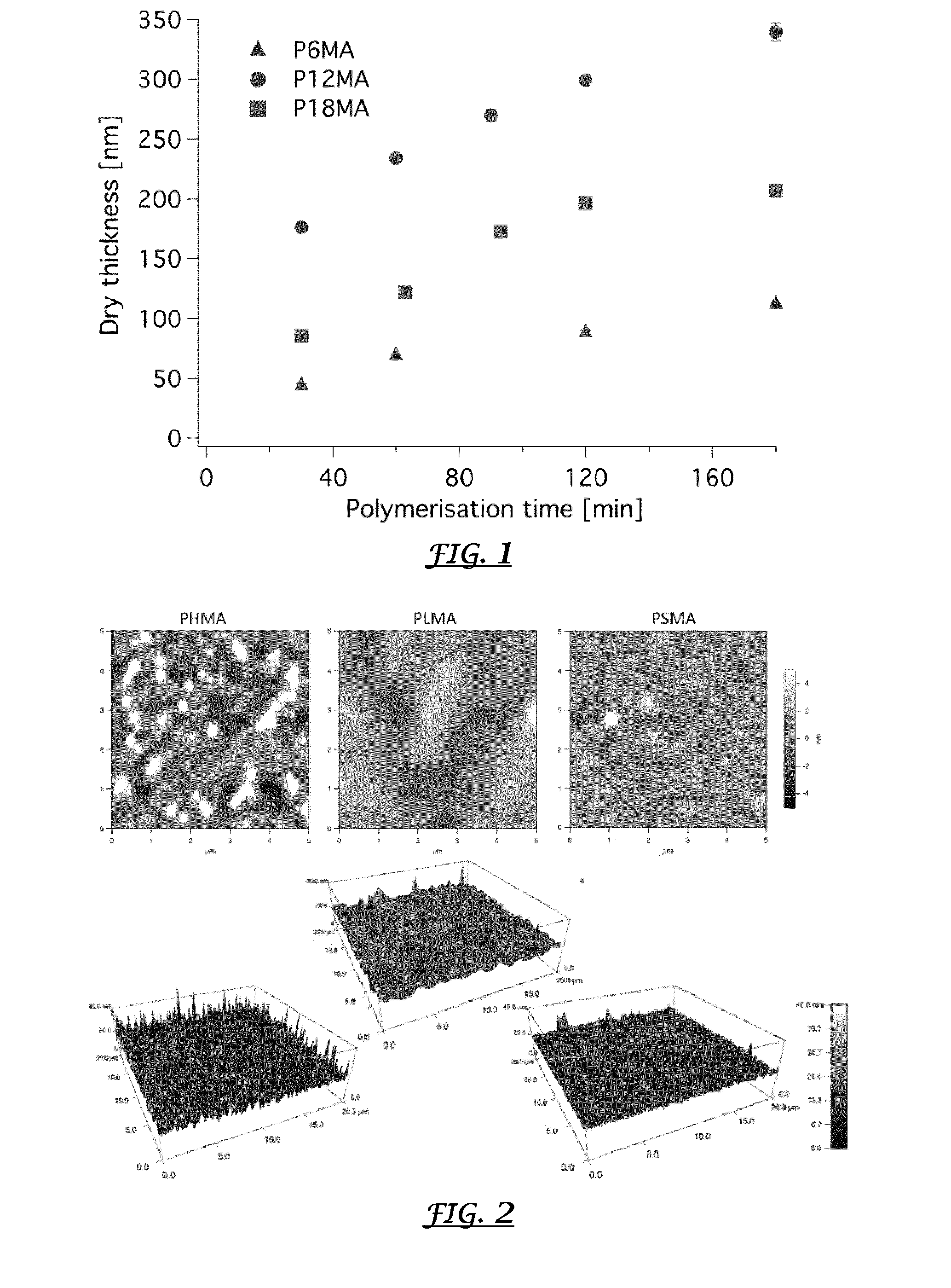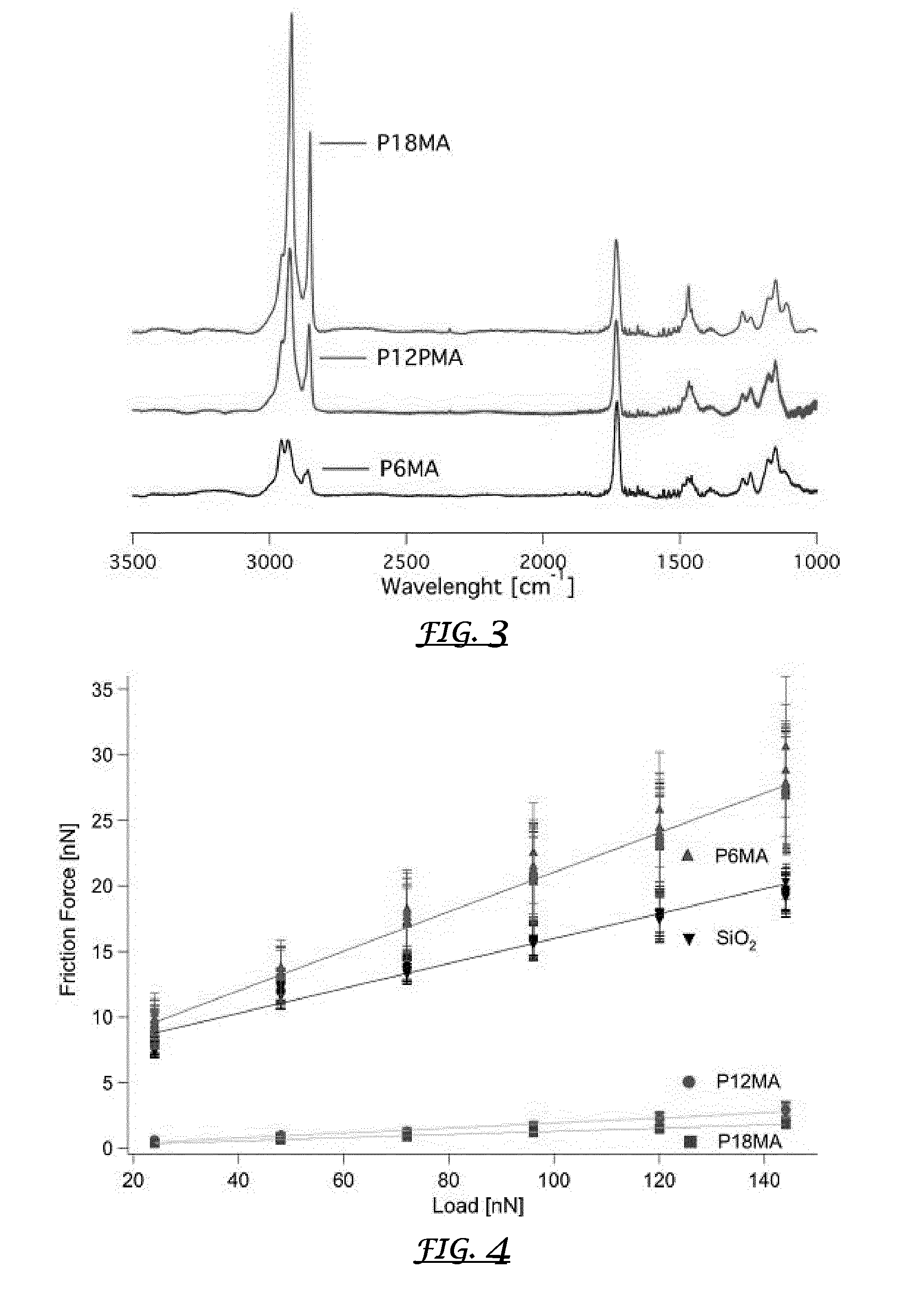Lubrication with oil-compatible polymer brushes
a polymer brush and oil-compatible technology, applied in the direction of lubricant composition, mechanical equipment, coatings, etc., can solve the problem that coating significantly reduces the coefficient of friction in the boundary regime, and achieves good tribological performance and increases the efficiency and reliability of movemen
- Summary
- Abstract
- Description
- Claims
- Application Information
AI Technical Summary
Benefits of technology
Problems solved by technology
Method used
Image
Examples
Embodiment Construction
[0036]Dimethylchlorosilane (Aldrich-Fine Chemicals, 98%), 10-undecen-1-ol (Aldrich-Fine Chemicals, 98%), 2-Bromo-2-methylpropionyl bromide (Acros Organics, 98%) and chloroplatinic acid hexahydrate (ABCR Deutschland 99.9%) were used for initiator synthesis as received.
[0037]Monomers, hexyl methacrylate (Aldrich-Fine Chemicals, 98%), dodecyl methacrylate (Acros Organics, 96%) and octadecyl methacrylate (TCI Deutschland GmbH, >95%) were diluted with pentane and purified from MEHQ inhibitor by passing through an alumina column.
[0038]4,4′-Dinonyl-2,2′-bipyridine (Aldrich-Fine Chemicals, 97%), anisole (Acros Organics, 99%) and copper (II) bromide (Sigma-Aldrich, 99%) were used as received. Copper bromide (Aldrich-Fine Chemicals, 5N) was purified by overnight washing in glacial acetic acid, washing with methanol and diethyl ether and drying under vacuum before use.
[0039]The synthesis of the initiator molecules followed the hereinafter protocol. From 10.7 ml of 10-undecen-1-ol in 50 ml dry ...
PUM
| Property | Measurement | Unit |
|---|---|---|
| thickness | aaaaa | aaaaa |
| contact pressures | aaaaa | aaaaa |
| friction coefficients | aaaaa | aaaaa |
Abstract
Description
Claims
Application Information
 Login to View More
Login to View More - R&D
- Intellectual Property
- Life Sciences
- Materials
- Tech Scout
- Unparalleled Data Quality
- Higher Quality Content
- 60% Fewer Hallucinations
Browse by: Latest US Patents, China's latest patents, Technical Efficacy Thesaurus, Application Domain, Technology Topic, Popular Technical Reports.
© 2025 PatSnap. All rights reserved.Legal|Privacy policy|Modern Slavery Act Transparency Statement|Sitemap|About US| Contact US: help@patsnap.com



